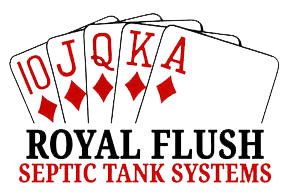Septic Systems are an Environmentally Sound, Affordable Option
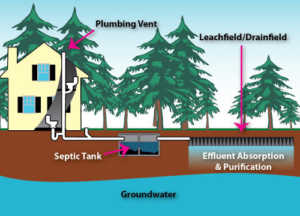 Sewage systems are much more typical since they’re funded as well as maintained by city governments. Septic tanks, nevertheless, are proving to be more preferred as a budget- and eco-friendly choice, while also providing homeowners complete control over their drainage.
Sewage systems are much more typical since they’re funded as well as maintained by city governments. Septic tanks, nevertheless, are proving to be more preferred as a budget- and eco-friendly choice, while also providing homeowners complete control over their drainage.
A septic system is one of the approaches used to drain wastewater from residences. The system contains a septic tank, which is put below ground someplace to the side or rear of a property. The septic tank receives outbound drains from sinks as well as bathtubs (greywater) and also commodes (blackwater) of a home. Inside the septic tank, crud and waste are divided from the water, and then the water is sent out to an outbound grid of perforated leach field pipes, where the water is leached into the soil.
All septic systems include 2 main components: a septic tank where solids gravitate to the bottom, as well as a leach field (additionally called a drain field) where the water dissipates. Specifics concerning the kind of septic system you have will be detailed in documents you got when you acquired your residence. The state environmental agency or health department may have back-up documents if finding them is a problem. In addition, a plumber could aid in determining just what you have.
Components of a Septic System
The Septic Tank
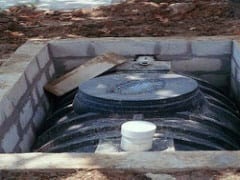
The objective of the septic tank is to decrease the circulation of water through the septic system for enough time for the solids to settle. It’s where solids are liquefied. As the wastewater goes into the container, its motion is brought to a grinding halt. This permits the solids to gravitate to the bottom of the septic tank where enzymes and microorganisms begin to digest them. The procedure starts with the enzymes, which dissolve the natural solids. As soon as dissolved, bacteria begin to do their task by soaking up the fluid. In this procedure of digestion, methane and also various other gasses are generated as a by-product.
The enzyme/bacteria activity has to be preserved in the septic tank to ensure that the solids are dissolved at the normal rate. The more activity within the container the quicker the solids will dissolve. The more solids dissolved, the cleaner the effluent will certainly be when dispersing in the leach field. A proper environment must be maintained for the microorganisms to thrive. This would certainly consist of having the septic tank installed deeply enough to preserve a temperature level over freezing. The enzymes and bacteria thrive at warmer temperature levels. Consequently, in chillier environments, the activity will certainly be slower.
The reality is, there are several sorts of bacteria. Some require oxygen to make it through and are named aerobic bacteria. Others die when exposed to oxygen. These are called anaerobic bacteria. There are good and bad bacteria. Tossing yeast right into the tank will certainly add some kinds of microorganisms, however definitely not nearly enough of the good bacteria to materially aid your septic tank. As such, yeast is considered somewhat practical, however, it is much better utilized for making bread and beer.
Leach Field Design
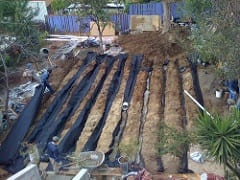
A leach field plays a critical role in the efficient operation of your septic system. They can’t be casually placed and a qualified professional must be involved, so installing a septic system isn’t really a great DIY project.
Leach Field System
A substantial investigation is called for prior to placing a septic leach field near your home. One of the most essential determinations is whether the soil will enable water to percolate through. Various other important tests will also be conducted. It’s critical to establish a firm understanding of drainage direction to avoid any possibility of interaction with community water systems. Even groundwater commonality should be avoided as it translates into the water supply.
After approval is received for the installation of a septic system and the leach field is fully tested, engineers will bury a network of 3- or 4-inch perforated pipe at a depth determined by their testing as appropriate for the soil conditions. To encourage the absorption and distribution of the water seeping from the perforated pipes, an aggregate is incorporated to surround them and allow a less impeded flow.
What Challenges Your System?
The microorganisms that do all the work in your septic system are limited in their ability to process some compounds. Catabolizing chlorinated solvents and petroleum products harsh and unable to dissolve metallic substances. These may become part of the septic tank’s sludge or even absorb into the leach field soil.
Cleaning products may damage the efficiency of your system
- Laundry bleach – Microbial activity in the leach field may become sluggish, or stop altogether.
- Sanitizing or Deodorizing Compounds – Similar to the effect caused by the bleach, microbial activity is impeded.
- Detergents, drain cleaners, and solvents may facilitate the transfer of emulsified, saponified or dissolved fats into the leach field before they’ve had time to be catabolized to organic acids in the scum layer.
A Failed Leach Field
The leach field may over-fill with nonbiodegradables from the septic tank, impeding the water’s ability to commute into the soil. The water will ride the surface and the field will seem wet all the time. Just before you see actual puddles forming, you may notice the grass becoming very lush and green. It makes sense they would suddenly be thriving with the boost in nutrients they would receive from the overflow. Bushes and shrubs will also look lovely. All well and good, enjoy it for a minute, then take a breath. Very soon the odor of sewage will compliment your lovely setting and you’ll know for sure you have a challenge. If you do nothing and the septic system is untreated, it might be time to move… for everyone in range …and nobody’s going to be happy about it. Save yourself the grief and maintain your septic system carefully.
Tips for Planting the leach field
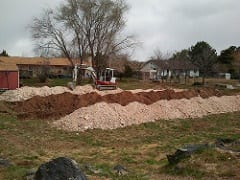
When growing a lawn over a septic tank leach field area, do not include added dirt, unless it is a very small amount to repair erosion effects or replace dirt removed incidentally, such as when removing a plant. If you need to till the soil before you can put down any seed, be extremely careful and DO NOT use a rototiller. The pipes could be as close as 6 inches from the surface, well within the range of an enthusiastic rototiller. When you’re area is ready and you’ve laid down your seed, only cover it with two or three inches of soil. Much more could stop the air and water exchange required for leach field effectiveness.
Why Plant Anything?
There are numerous factors that might motivate you to plant your leach field. Mitigating the risk of erosion is a big one. Plants also enhance the septic system’s efficiency by optimizing the exchange of oxygen and moisture removal through transpiration. From this standpoint, the best choice is grass.
Alternatively, your reasons may be more aesthetic. Perhaps your leach field is the only area to receive regular sunlight, or it’s your front yard. If you’re planting anything but grass, consult the experts before making any decisions on what to plant. Some types of vegetation have root systems that may potentially damage your perforated pipes. If that happens, you’re in for a multitude of problems. Gradual decay of your septic system, leading to floating effluent with the attendant odors, followed by inconvenient and costly repairs. It pays to consult with a septic system professional.
No Vegetables!
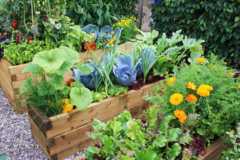 Although the drain field may appear to be a vegetable paradise, it is not advisable. Different soils are able to filter contaminants from the effluent, but to varying degrees, and by no means are they guaranteed to filter ALL harmful contaminants. The health risks affiliated with bacterial contaminants make a leach field highly inappropriate for planting any kind of consumable. Even without the health risks, the need to cultivate the soil and maintain it throughout the growth cycle with supplemental watering and fertilization poses a risk to the components of your septic system. Even raised bed planting is not recommended as it interferes with soil moisture evaporation.
Although the drain field may appear to be a vegetable paradise, it is not advisable. Different soils are able to filter contaminants from the effluent, but to varying degrees, and by no means are they guaranteed to filter ALL harmful contaminants. The health risks affiliated with bacterial contaminants make a leach field highly inappropriate for planting any kind of consumable. Even without the health risks, the need to cultivate the soil and maintain it throughout the growth cycle with supplemental watering and fertilization poses a risk to the components of your septic system. Even raised bed planting is not recommended as it interferes with soil moisture evaporation.
Multiple Disposal Areas
Some leach field designs incorporate multiple disposal areas, allowing rotation of which areas are filtering effluent, from a single tank. This lets an area rest periodically. The nematode community will continue to consume the biofilm and fats, naturally cleansing and potentially reducing clogging. This hopefully results in improving the field’s hydraulic capacity as the consumed material is oxidized and increases available interstitial space. The rested area may never fully realize the original percolation rate held prior to resting, but it’ll come close. The potential benefits are felt by many to be worth the risk.
Final Thought
If you feel a septic system is your best option, then it is highly recommended you contact a qualified professional installer for further advice and examination of your property for suitability. They will be able to determine if your property is appropriately configured for installation of a septic system and answer any further questions you may have regarding sustainability and maintenance.
